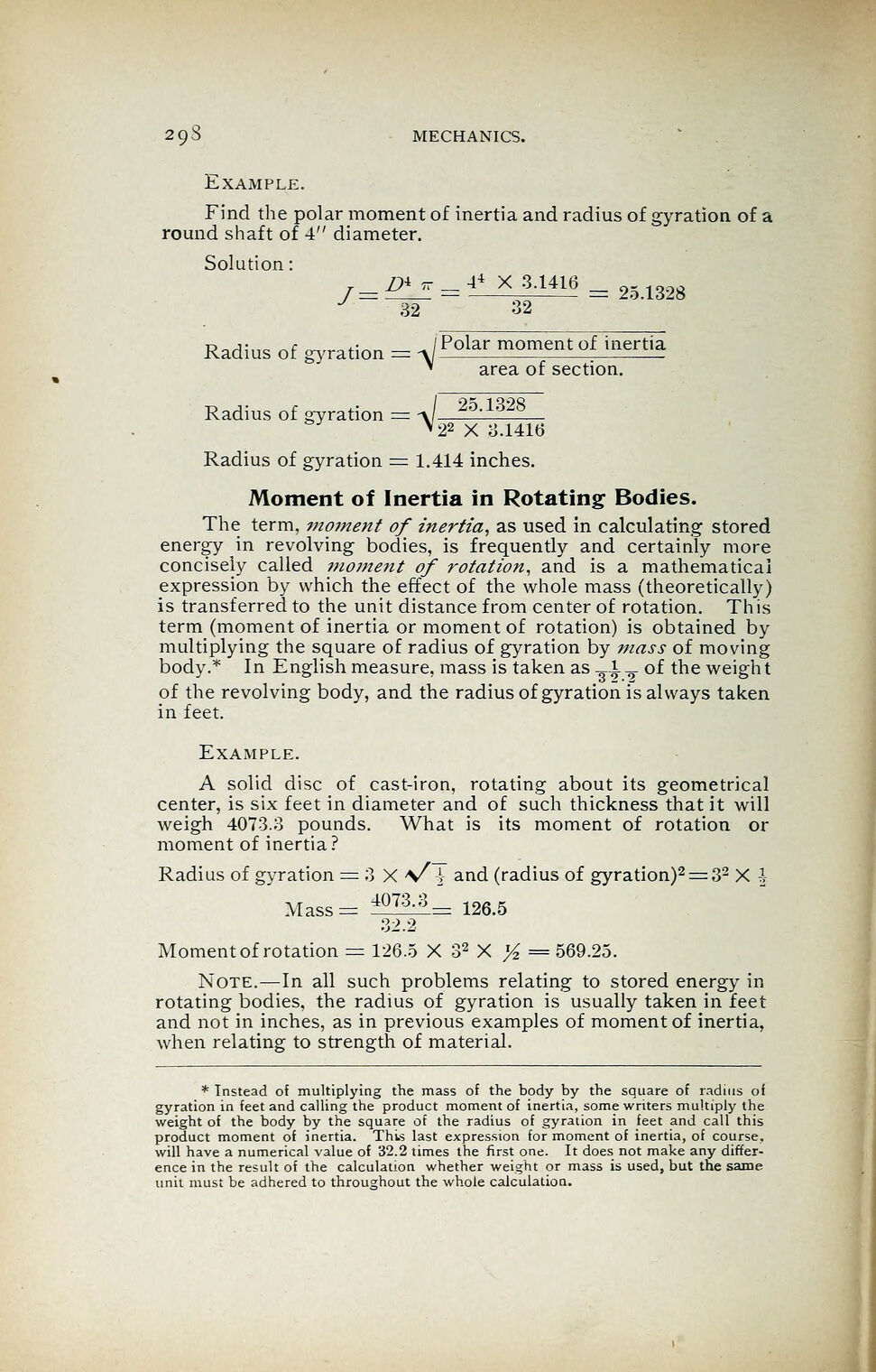
Full resolution (JPEG) - On this page / på denna sida - Mechanics - Polar moment of inertia

<< prev. page << föreg. sida << >> nästa sida >> next page >>
Below is the raw OCR text
from the above scanned image.
Do you see an error? Proofread the page now!
Här nedan syns maskintolkade texten från faksimilbilden ovan.
Ser du något fel? Korrekturläs sidan nu!
This page has never been proofread. / Denna sida har aldrig korrekturlästs.
2Qi» MECHANICS.
Example.
Find the polar moment of inertia and radius of gyration of a
round shaft of 4" diameter.
Solution
/= gJ5 = 44X3- 141g
= 25.1328
J
32 32
Radius of gyration = -v/
Polar moment of inertia
area of section.
Radius of gyration — a/_
25.1328
22
X 3.1416
Radius of gyration = 1.414 inches.
Moment of Inertia in Rotating Bodies.
The term, moynent of inertia, as used in calculating stored
energy in revolving bodies, is frequently and certainly more
concisely called moment of rotation, and is a mathematical
expression by which the effect of the whole mass (theoretically)
is transferred to the unit distance from center of rotation. This
term (moment of inertia or moment of rotation) is obtained by
multiplying the square of radius of gyration by mass of moving
body.* In English measure, mass is taken as -^\ v of the weigh t
of the revolving body, and the radius of gyration is always taken
in feet.
Example.
A solid disc of cast-iron, rotating about its geometrical
center, is six feet in diameter and of such thickness that it will
weigh 4073.3 pounds. What is its moment of rotation or
moment of inertia ?
Radius of gyration = 3 X */ } and (radius of gyration)2 =32
X I
Mass = +™A= 126.5
32.2
Moment of rotation = 126.5 X 32
X %. = 569.25.
Note.—In all such problems relating to stored energy in
rotating bodies, the radius of gyration is usually taken in feet
and not in inches, as in previous examples of moment of inertia,
when relating to strength of material.
* Instead of multiplying the mass of the body by the square of radius of
gyration in feet and calling the product moment of inertia, some writers multiply the
weight of the body by the square of the radius of gyration in feet and call this
product moment of inertia. This last expression for moment of inertia, of course,
will have a numerical value of 32.2 times the first one. It does not make any differ-
ence in the result of the calculation whether weight or mass is used, but the same
unit must be adhered to throughout the whole calculation.
<< prev. page << föreg. sida << >> nästa sida >> next page >>